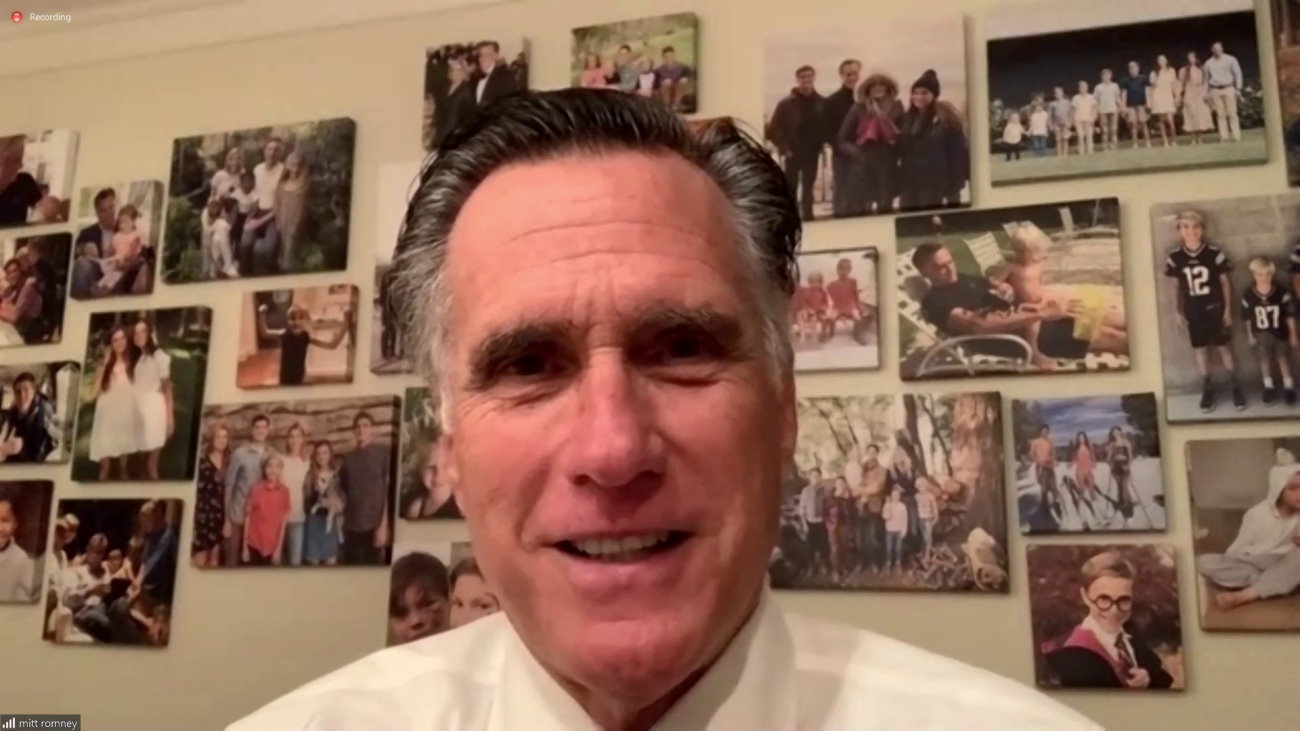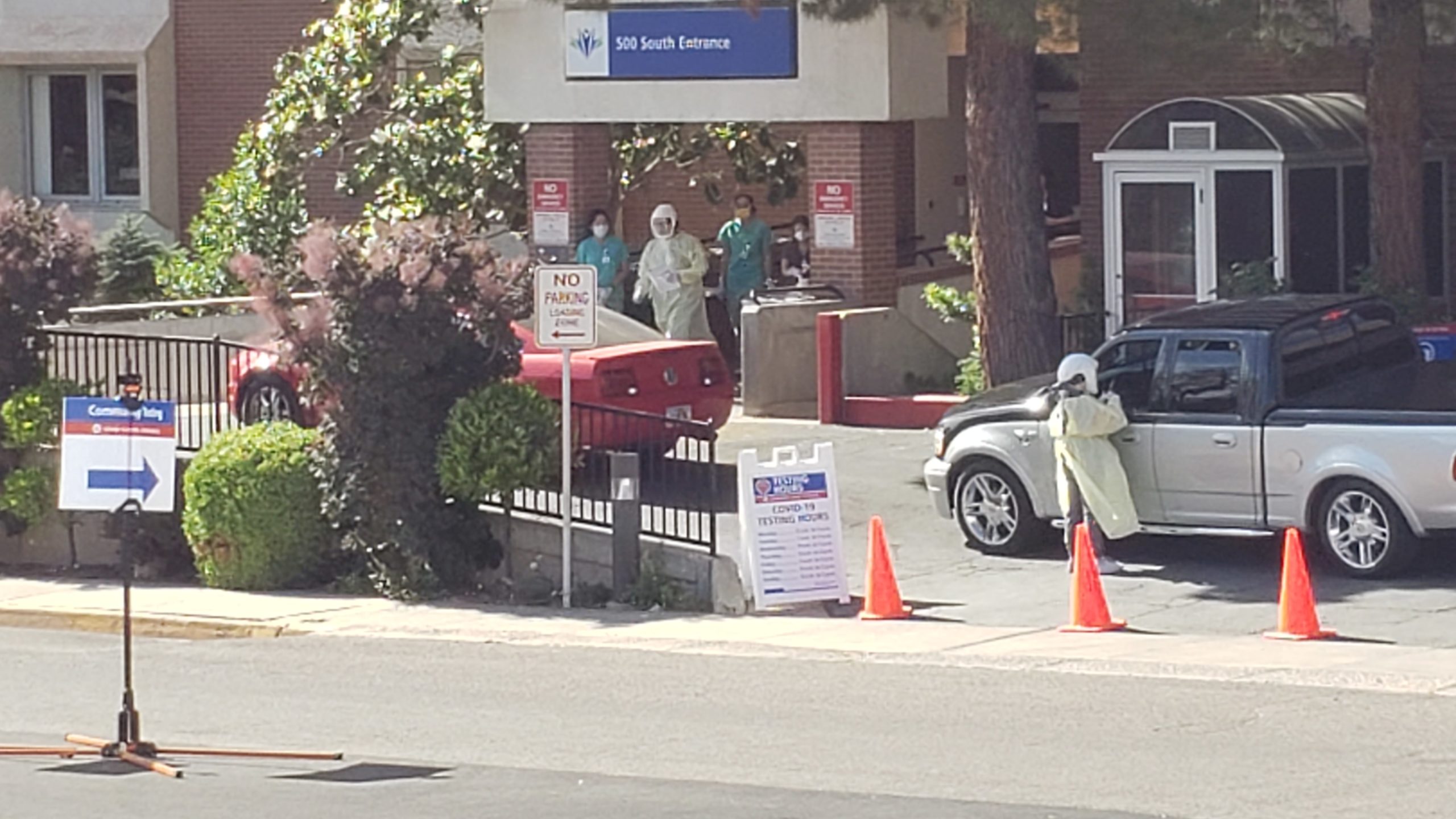
ST. GEORGE — Utah Sen. Mitt Romney and nine of his Senate Republican colleagues met with President Joe Biden at the White House on Monday to discuss the Republicans’ COVID-19 relief proposal and find ways to create a more bipartisan approach versus a package supported by Democrats alone.

While no agreement was reached during the two-hour meeting, Romney said he was hopeful for a positive outcome as the president told his staff to work with those of the GOP senators concerning the items they addressed that evening.
“There was not an agreement reached – we didn’t expect an agreement to be reached,” Romney said during a conference call with Utah media following the meeting. “We’re going to continue working with the White House. He (the president) has genuine interest in working with us.”
Romney said it was an honor to be able to meet with the president and vice president, especially when the meeting took longer than either party originally thought it would. The meeting also marks the first time Biden has met with lawmakers in the Oval Office.
Overall, it was a good meeting and both sides agrees to discuss the matter further, Romney said.
The Republicans’ proposal runs $160 billion compared to the White House’s proposal of $1.9 trillion. There are also many sticking points between the two proposals.

“There are differences in almost every area, but not all,” Romney said, and pointed to the White House plan proposing $160 billion devoted to providing more personal protection equipment, faster coronavirus testing and vaccinations, which the GOP senators largely agree on, with the exception of $30 billion in that plan marked as “unidentified.”
“We said instead there should be $35 billion of that pool that should go to provide relief for providers – hospitals, clinics and so forth,” he said. Around 20% of that is proposed to go to rural hospitals under the GOP plan.
The GOP senators also proposed $20 billion to public education to help reopen schools that haven’t yet. As previous pandemic relief bills have already provided substantial aid to this field, “there’s not the need for the $170 billion which is in his (Biden’s) COVID relief package.”
The $20 million figure comes from estimates supplied by the Centers for Disease Control and Prevention, Romney added.
Another difference relates to the payment of relief checks. Romney said the president is committed to the $1,400 in his plan. Romney and the other senators say there needs to be an income level where the checks are cut off.
“We believe these checks should be focused on lower-income people,” he said.
The direct payments under the GOP plan would be $1,000 per person. For singles, this would start phasing out at a $40,000 annual income. Joint filers would see that phased out starting at $80,000 with a $100,000 cap. An extra $500 would be provided for dependent children and adults. This is estimated to account to $220 million of proposal overall.

There were differences in relief to state and local communities as well. Romney said the White House’s plan proposes to give money to states and cities that don’t need it. Some states and cities came out of 2020 doing well financially and shouldn’t get funding they don’t need, he said. Instead, the GOP wants to see a more selective approach for relief funding versus a blanket one.
While Romney said he would like the Democrats to take a more bipartisan approach on the next COVID-19 relief package, he noted they are fully capable of getting it through without Republican support; however, this could prove to be a disadvantage for Senate Democrats moving forward.
Getting bipartisan support now would be a good way to garner support for future votes that will require Republican support to pass, the senator said. While the relief package can go ahead with 51 votes, other matters will still require two-thirds of the Senate to pass, and that’s a majority Senate Democrats don’t have.
“There are incentives to move in a bipartisan way,” Romney said. “Many things that happen in the Senate require Republican support.”
Copyright St. George News, SaintGeorgeUtah.com LLC, 2021, all rights reserved.